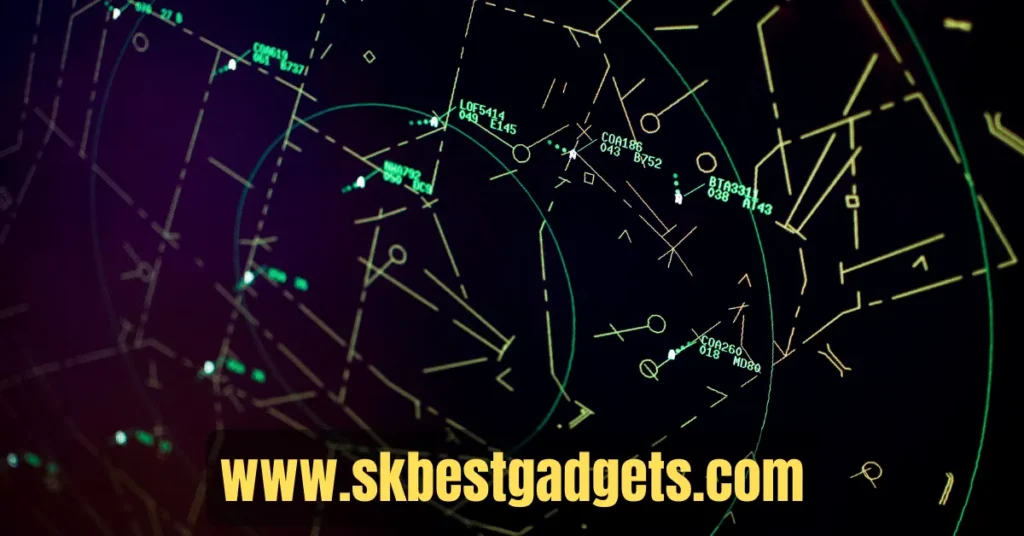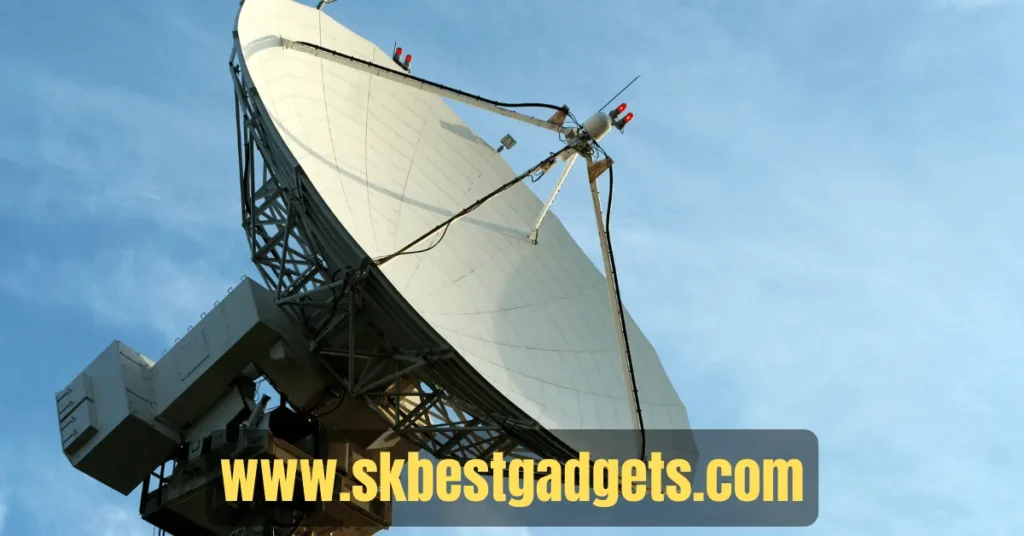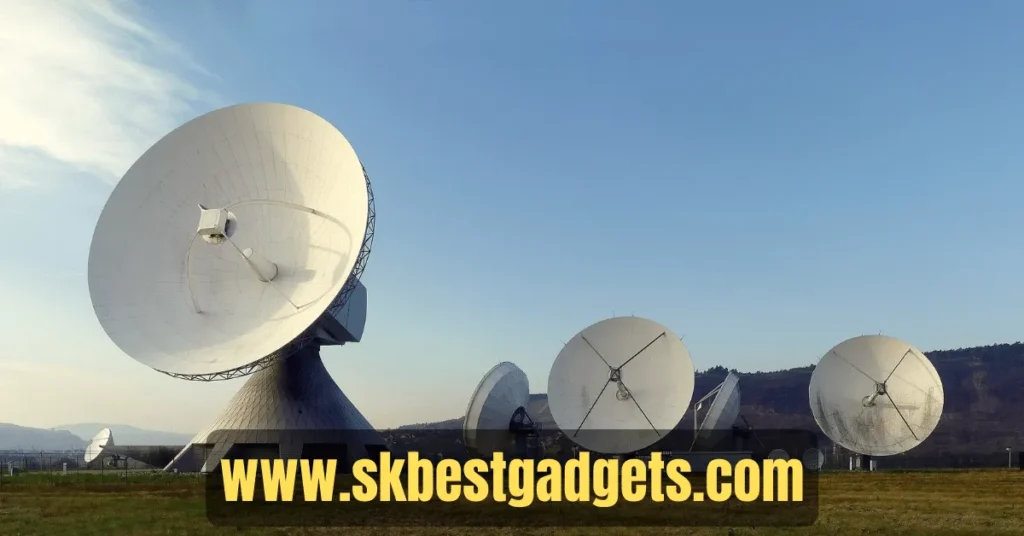Can Radar Detect Drones? (Surprising Truths & 8 Tips)

In the ever-evolving world of drone tech, there’s one big question on our minds: Can Radar Detect Drones? Let’s take a deep dive into the radar universe to figure it out.
We’re on a mission to demystify radar, get to know how it works, and see how it can spot drones like a pro. Along the way, we’ll check out the hurdles radar faces and explore all the cool radar systems designed to spot drones in different situations.
Join us as I peek into the future of radar tech, where I spill the beans on trends that’ll change how we spot drones. I’ll tackle questions like, “Can radar work its magic at night or in bad weather?” and “Can it spot those tiny, low-flying drones, or the ones trying to play hide and seek?”
This article isn’t just tech jargon; it’s all about boosting your drone IQ and helping you make smart choices in the world of drones. Welcome to the radar and drone party, where I spill secrets that could reshape how we use these awesome gadgets.
Key Takeaways
- Radar uses radio waves to locate objects in various situations.
- Radar can detect drones and determine their distance and direction.
- Different radar types, like pulse and CW, serve specific purposes.
- Specialized radar systems enhance accurate drone detection.
- Radar can be affected by drones’ small radar cross-section.
- Collaboration with cameras and RF sensors improves detection accuracy.
- Radar tech is evolving, becoming smaller, and more affordable.
- Higher-frequency radars excel at spotting small drones.
- Machine learning aids in distinguishing drones and reducing false alarms.
- Radar’s versatility extends beyond drone detection to various industries.
What is radar and how does it work?
Let’s break down radar – it’s like a super-smart system that uses radio waves to spot things in all sorts of situations. Seriously, it’s everywhere – think air traffic control, military missions, weather forecasts, ship navigation, cops on the beat, and even when we’re exploring space.
Now, here’s the radar 101: it shoots out a focused radio wave beam and then listens for echoes bouncing back from stuff in its path.
The time it takes for those echoes to come back helps us figure out how far away things are. Plus, radar can also tell you which way things are pointing (that’s called azimuth), like whether it’s north or somewhere else.

But radar isn’t just about location; it’s also got the need for speed. It uses something called the Doppler effect – that’s when waves change their frequency if the radar or the thing it’s looking at is moving. So, radar can tell you how fast stuff is zipping around.
Now, there are two main types of radar: pulse radar and continuous wave (CW) radar. Pulse radar sends out short bursts of radio waves and times how long it takes for them to bounce back to figure out distances.
On the flip side, CW radar keeps sending out radio waves and uses the Doppler shift to know how fast things are going. Most of the time, pulse radar is the go-to, while CW radar is more for specialized stuff like checking how fast cars are going.
The bottom line is, that radar is like our secret superpower for finding and tracking stuff in all sorts of situations. It’s a big deal in tons of fields and keeps our modern world running smoothly.
How can radar be used to detect drones?
Let’s dive into how radar spots those pesky drones. There are a couple of slick methods in the radar playbook.
First up, pulse radar is a champ at not only finding drones but also telling you how far away they are and which way they’re headed. It’s like having a radar GPS for drones, giving real-time info to a human or a computer.
Then we’ve got continuous wave (CW) radar. This tech looks at the Doppler shift of radar waves bouncing off the drone. By crunching those numbers, it figures out how fast the drone is going. So, it’s like catching speed demons in the radar act, whether they’re coming or going.

But drones can be sneaky, with their small radar footprint. That’s where specialized radar systems come in. They’re like radar detectives, specifically trained to spot drones with pinpoint accuracy.
But here’s the secret sauce: radar teams up with other sensors like cameras and radio frequency (RF) sensors. It’s like having a drone detection dream team. They work together to paint a full picture of the airspace, so you’re not chasing after false alarms, making drone detection a real slam dunk.
What are the limitations of radar in detecting drones?
Radar tech is pretty handy for spotting drones, but it’s got its quirks. One big hitch is that drones have a tiny radar cross-section (RCS). In plain talk, they don’t bounce back much radar signal, making them hard to spot, especially from far away.
Another hiccup is that drones aren’t speed demons. Regular radar is built for fast-moving stuff, so keeping tabs on drones can be a pain.
Plus, the world around us is cluttered. Radar can get confused by things like birds, bugs, buildings, and trees, thinking they’re drones because they bounce radar signals too.

Then there’s the high-tech stuff – electronic countermeasures (ECMs). Drones can be rigged with ECMs that mess with radar, making it tough or even impossible to spot them. And don’t forget, setting up and keeping radar systems running can cost a pretty penny.
But, hey, radar still rocks for spotting drones. It’s even better when paired with other gadgets like cameras and radio frequency (RF) sensors.
Teamwork makes the dream work, right? This combo gives us a full picture of what’s happening up there, fewer false alarms, and a better shot at catching those sneaky drones.
Smart folks are out there, brainstorming ways to make radar even better at spotting drones. Some are tinkering with radars that use different frequencies, while others are teaching machines to recognize drones. The future’s looking bright for radar!
What are the different types of radar systems available for drone detection?
When we talk about spotting drones, there’s a whole bunch of radar systems out there, each with its mojo. These gizmos are the secret sauce to finding and keeping tabs on drones, and the one you pick depends on what you need. So, let’s dive into the different types of radars folks use for this job.
First up, we’ve got pulse radar systems. These bad boys send out quick, concentrated bursts of radio waves. They clock how long it takes for the signal to bounce back, and bam, you know how far away the drone is. Super accurate, but they can hit your wallet pretty hard.

Then there’s continuous wave (CW) radar. These guys are like the slow and steady-type. They keep sending out radio waves and use the Doppler shift to figure out how fast things are moving. Budget-friendly, but they might not be as sharp at spotting drones, especially in tricky situations.
Now, for the twist – twist-frequency-modulated continuous wave (FMCW) radar systems. These use fancy frequency changes to measure distance. They strike a balance between being good at finding drones and not breaking the bank. Nice!
Millimeter wave radar systems are like the snipers of drone detection. They use millimeter waves to spot drones, but they’re not great for long-distance work. If you need pinpoint accuracy, though, these are your go-to.
Last but not least, multi-static radar systems are the brainiacs of the radar world. They team up with multiple transmitters and receivers to find drones. They’re top-notch, but they’re also top-dollar.
Picking the right radar depends on the situation. If you’re hunting drones from afar, pulse radar is your buddy. But if you’re in a messy area, you might want a radar that can sift through the noise. Your radar choice should match what you need, whether it’s accuracy, cost, or range.
How are radar systems used to detect drones in different applications?
Radar systems are like the superheroes of drone spotting, and they pop up in all sorts of places. Let’s break it down in plain English.
First off, in air traffic control, they’re the guardian angels. They spot drones in airport airspace, making sure they don’t accidentally bump into regular planes. Safety first, right?
In the military, radar keeps an eye out for drones with bad intentions. They’re on the lookout for drones carrying explosives or weapons, helping to keep our country safe. Radar also plays border patrol, sniffing out drones trying to cross borders for shady stuff like smuggling.

They’re not just about national security; they’re also the bodyguards of important stuff like power plants and concert venues. Radar keeps an eye out for drones that could cause trouble at big events or mess with important infrastructure.
But radar isn’t a one-trick pony. It helps researchers make new and better drone detection tech, assists cops in catching drones up to no good, and even helps businesses protect their operations from airborne threats.
Now, how they work depends on where they’re used. In air traffic control, they track drones and warn pilots about potential collisions. In the military, they not only spot hostile drones but also keep tabs on what they’re up to.
Radar is pretty awesome because it works day or night, rain or shine, and can spot drones from far away, even lots of them at once.
But, like all heroes, they’ve got their kryptonite. Sometimes they get tricked by things like clutter or electronic gadgets, and they can be a bit pricey to set up and maintain.
Still, even with their quirks, radar systems are essential for spotting drones. They team up with other fancy sensors like cameras and RF thingamajigs to give us a full view of the sky. Less false alarms and more accurate drone spotting – that’s what radar brings to the table, keeping us all safe and sound.
What are the future trends in radar technology for drone detection?
Radar tech for spotting drones is going through some cool changes that are shaping the future. Here are a few stand-out trends:
First off, radar systems are getting smaller and cheaper. This means more people can get their hands on radar tech, and it’s finding new uses, like spotting drones. As these systems become easier to get, they’re popping up in all sorts of places.

Next, radars are cranking up the frequency dial. Higher-frequency radar systems have shorter wavelengths, which makes them awesome at spotting small stuff, like drones.
Scientists are even working on radars that can handle millimeter-wave and terahertz frequencies, supercharging their drone-spotting powers.
Machine learning is jumping into the radar game too. It’s all about teaching radar systems to tell drones apart from other things in the area. That way, we get fewer false alarms and way better drone detection.
Multi-whatchamacallit radar systems are also getting popular. These systems use lots of radar gadgets to spot things, especially in messy places where drones like to hide.
But they used to be complicated and pricey. Now, smart folks are working on cheaper and easier versions of this tech.
But beyond all this, radar tech is just getting cooler and more advanced overall. Lots of folks want radar for different things, and finding drones is a big deal in this radar revolution.
Can radar detect drones at night?
Radar systems can spot drones at night without a hitch. These systems use radio waves to detect stuff, and the darkness doesn’t cramp their style. They might work even better at night because there’s less stuff to get in their way.
But here’s the deal: how good radar is at finding drones at night can change. It depends on stuff like what kind of radar you’re using, how big the drone is, and what the weather’s like.
Some radars are pros at spotting drones, while others struggle. Also, it’s easier to spot big drones than small ones. And if there are trees and buildings around, they can mess things up by cluttering the radar screen.

Still, radar is a handy tool for finding drones in the dark. Usually, folks use it along with other sensors like cameras and RF sensors to get the full picture of what’s flying around. This combo helps cut down on false alarms and makes sure we’re nailing that drone detection.
Can radar detect drones in bad weather?
Radar tech can spot drones even when the weather’s acting up – think rain and fog. But how well it works depends on a few things: the kind of radar you’re using, how big the drone is, and what the weather’s like.
See, when it’s rainy or foggy, radar signals can get weaker as they travel through the air. This can make it tough for radar to spot drones. Plus, rain and fog can mess with radar signals, sometimes causing them to bounce around and give false alarms.
But here’s the good news: some radars are like weather warriors. They’re built to handle lousy weather like pros. These radars use fancy tricks to deal with weak signals and signal bouncing.

And some of them can switch between different frequencies to cut down on false alarms. So, even when it’s nasty out, radar can still keep an eye on those drones.
Can radar detect small drones?
Sure, radar tech can spot those little drones, but it’s not always a slam dunk. It depends on a bunch of stuff: what kind of radar you’re using, how tiny the drone is, and what’s going on around it.
You see, small drones don’t bounce back a lot of radar signals. They’re like stealth mode, which makes them tricky to catch, especially from far away. Plus, they can look a lot like birds or bugs, so radar can get a little confused.
But don’t worry, there are radars out there that are like drone detectives. They use fancy tricks, like high-frequency waves and super-focused beams, to find tiny drones better.
And some of them are so smart, they’ve learned to tell drones apart from other stuff with the help of machine learning. So, even though small drones can be sneaky, radar’s got some tricks up its sleeve to spot them.

Can radar detect drones that are flying low?
Yep, radar tech can spot drones cruising at low altitudes, but it’s not always a walk in the park. It depends on a bunch of things, like what kind of radar you’ve got, what the drone’s like, and what’s happening around them.
Here’s the deal: low-flying drones are hanging out closer to the ground, where stuff can bounce radar signals around. That makes it tricky to say for sure if it’s a drone or just some trees or buildings.
But don’t sweat it – there are radars designed to handle this. These special radars use cool tricks, like high frequencies and narrow beams, to get better at finding low-flying drones.

And some of them are so smart they use machine learning to figure out if it’s a drone or not. So, even when they’re low and sneaky, radar can still spot those drones.
Can radar detect drones that are trying to evade detection?
Sure thing, radar tech can spot sneaky drones that are trying to stay hidden. But whether it works depends on a bunch of stuff, like the kind of radar you’re using, what the drone’s like, and how crafty the operator is at dodging radar.
Now, there are different types of radar out there, each with its strengths and weaknesses. To catch those agile drones, you need a radar that’s built for the job, not just any old radar.
The size and type of the drone matter too. Smaller, nimbler drones can be a real challenge to spot, especially from far away. So, the radar has to be super-tuned to pick them up.
And then there’s the operator. Some folks flying drones are like radar ninjas. They use tricks like flying low, staying small, or using stealth tech to make it hard for radar to spot them.

In a nutshell, radar can find those evasive drones, but it’s all about having the right radar, knowing your drone stuff, and being ready for some tricky tactics from the drone operator.
Important FAQs
Can radar detect drones during the day and at night?
What types of radar systems are commonly used for drone detection?
Are radar systems accurate in spotting small drones?
How do radar systems cope with bad weather conditions like rain and fog?
Can radar detect drones flying at low altitudes?
Do radar systems work against drones attempting to evade detection?
Are radar systems used solely for drone detection?
What are the future trends in radar technology for drone detection?
Final Thoughts
In the ever-evolving realm of tech and innovation, radar stands as a reliable partner in our mission to spot drones. We’ve delved into its intricacies, uncovered its strengths, and even chuckled at its quirks.
Now that you’re armed with this knowledge, you’re all set to navigate the world of drones and make savvy decisions.
But hey, this journey is far from over! We’re all ears and eager to hear from you. Share your thoughts, experiences, or any burning questions you may have in the comments below.
Have you ever witnessed radar in action, or do you have some insights to toss into the mix? Come join the conversation and become a part of the radar and drone enthusiasts’ gathering!
And here’s the deal: if you found this article eye-opening, why keep it to yourself? Share the tech buzz with your fellow drone fanatics and tech geeks.
Together, we can spread the word about the intriguing universe of radar technology and how it’s shaping the future of drone detection.
We appreciate you being a part of the SK Best Gadgets community. Stay tuned for more captivating insights and updates on the cutting edge of drone tech!
Can You Bring a Drone on a Cruise Carnival? (3 Secrets & 8 Tips)
Having explored the fascinating world of radar and drone detection, you’ll definitely want to check out our next article: “Can You Bring a Drone on a Cruise Carnival? (3 Secrets & 8 Tips).” Discover the secrets and tips for taking your drone on a cruise adventure!







